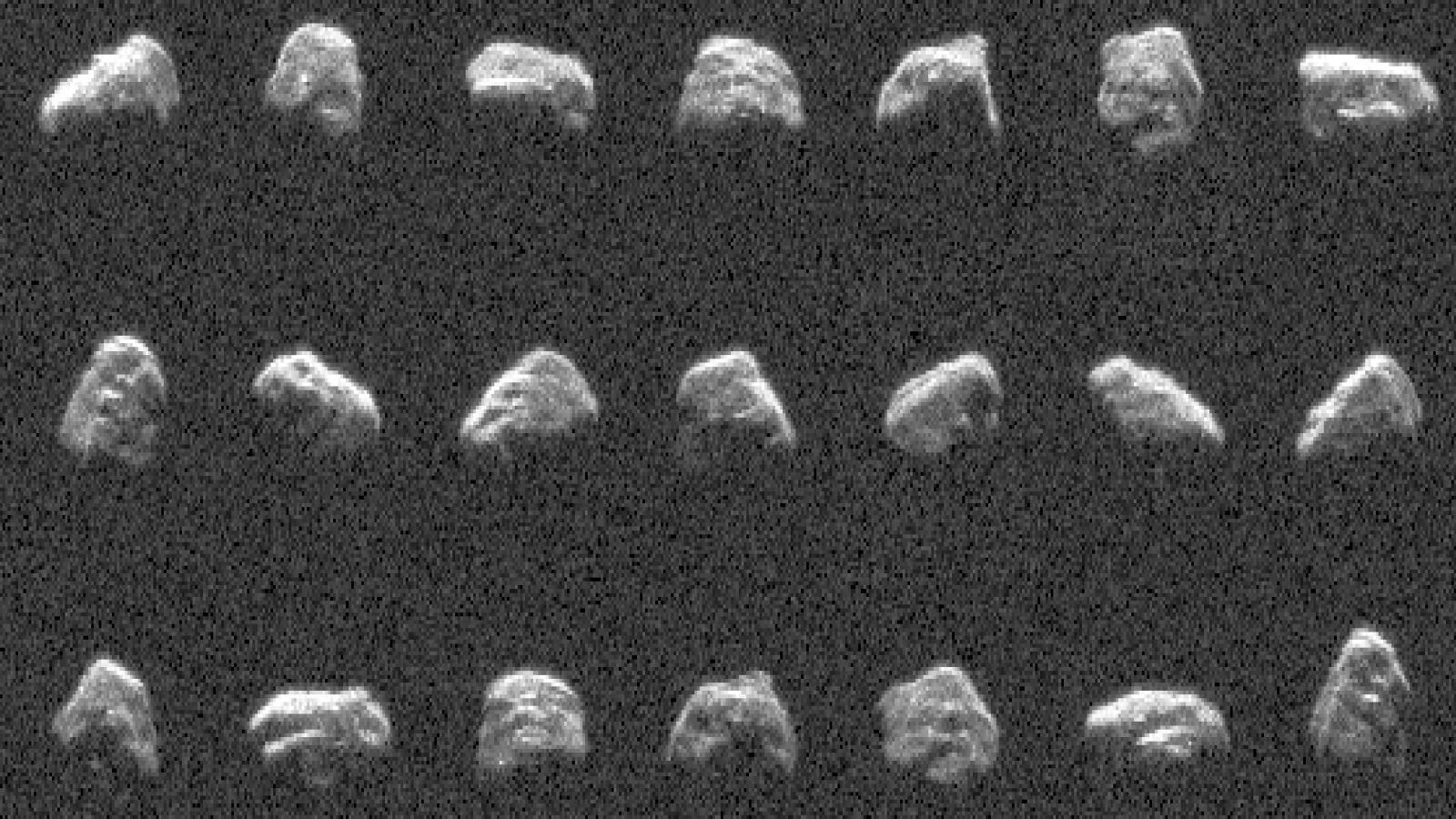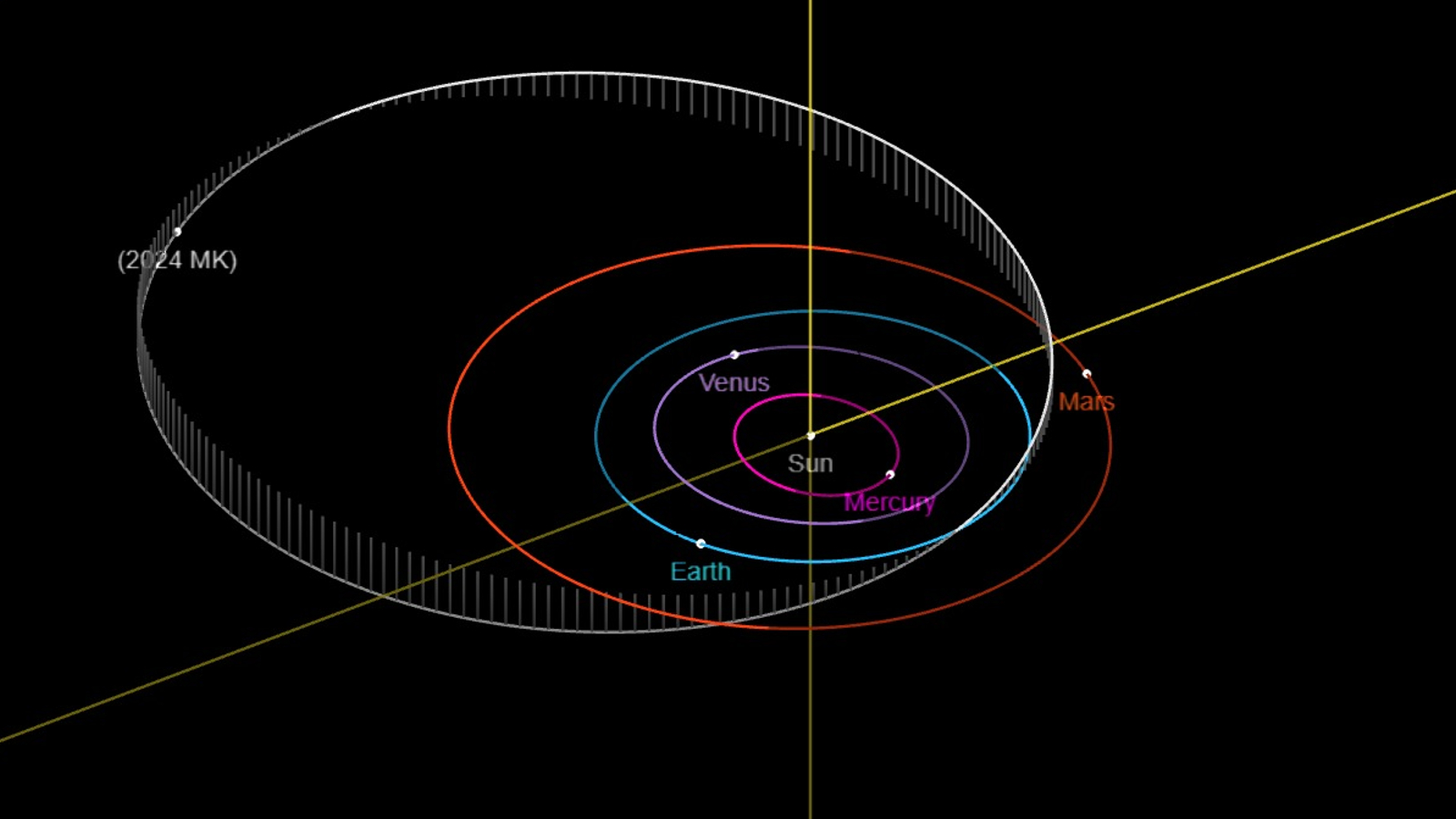
Late last month, a gigantic asteroid larger than the Great Pyramid of Giza hurtled between Earth and the moon at more than 21,000 mph (34,000 km/h). The rare, ultra-close encounter allowed astronomers to capture the first-ever pictures of the space rock, which revealed that the near-Earth object was lightly knocked off course by our planet's gravitational pull — forever changing the asteroid's journey around the sun.
The asteroid, named 2024 MK, is roughly 500 feet (150 meters) across, making it big enough to wipe out a large city. The "potentially hazardous" space rock, which has an irregular and elongated shape, was first spotted barreling toward Earth on June 16 by the NASA-funded Asteroid Terrestrial-impact Last Alert System (ATLAS) in South Africa.
On June 29, just 13 days after it was discovered, 2024 MK reached its closest point to Earth as it skimmed our planet's orbit at a distance of around 184,000 miles (295,000 kilometers) — or around three-quarters of the distance between Earth and the moon.
Astronomers at NASA's Goldstone Deep Space Communications Complex in California monitored the flyby using the Goldstone Solar System Radar telescope. By bouncing radio waves off the space rock as it shot past Earth, the team created grainy "bistatic" images of the asteroid, which helped them determine its exact shape and map out the concavities and ridges on its surface. The new photos were released July 3 by NASA's Jet Propulsion Laboratory (JPL).
Just two days before the flyby, on June 27, the same telescope also captured images of the much larger "planet killer" asteroid 2011 UL21 as it passed by our planet at a distance of around 4.1 million miles (6.6 million km). These pictures revealed that this mountain-size space rock has a secret moon hiding in its orbit.
Related: No, NASA hasn't warned of an impending asteroid strike in 2038. Here's what really happened.

The new observations of 2024 MK revealed that the space rock's trajectory has shifted since it was first discovered. This is likely because Earth gravitationally tugged on the asteroid as it passed by us, pulling it slightly closer to our planet.
This alteration was quite significant. The asteroid previously orbited the sun every 3.3 years, spending most of its time in the asteroid belt between Mars and Jupiter. However, scientists now believe that it will take 24 fewer days to complete the route, according to JPL.
But luckily, "its future motion shows that it [still] does not pose a threat to our planet for the foreseeable future," NASA representatives wrote in a statement.
MK 2024 was originally scheduled to make its next closest approach to Earth in 3037. However, this could now happen several months earlier than expected due to its new orbital trajectory. It is now unclear how close it will get to us or if our planet's gravity will further alter its orbit.







